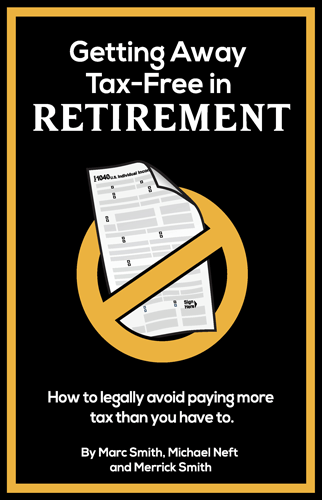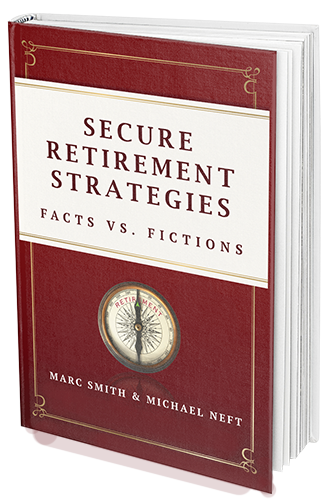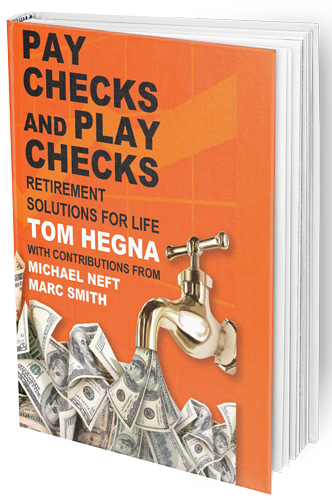The Importance of Solvency Ratios for Insurance Companies and Your Investments
When you invest in an insurance company, it’s vital for you to understand how the health of an insurance company is measured via a solvency ratio. If the insurance company cannot pay its bills or its obligations when they come due, it is insolvent. Reducing risk of investing in insurance companies is one of the important measures of solvency. Solvency ratios test a company’s ability to pay its liabilities as they come due. An insurance company’s solvency ratios help you assess the strength and stability of the company, and ultimately determine if it’s an appropriate investment for your portfolio. In this article, we discuss what solvency ratios are, and how they are used to analyze insurance companies, ultimately providing you with a better picture of how safe your money is.
Video Transcript Follows Article
What are Solvency Ratios?
Solvency ratios measure the financial strength of an insurance company. The capital adequacy ratio (also known as the solvency ratio) is a measurement of the amount of capital the insurance carrier has in reserves compared to the obligations they carry in their existing contracts. A company’s capital is its net worth, which is its assets minus its liabilities. If a company has enough capital, it can withstand losses incurred through investments. Insurance companies use solvency ratios to determine the amount of capital they should have to protect policyholders. The three most common solvency ratios are the liquidity ratio, the debt-to-equity ratio, and the capital and loss reserve ratio. Each ratio is a way of gauging how solvent an insurance company is by accounting for its available cash, its debt and how much money it has set aside in case of a loss.
The Importance of Solvency Ratios
An insurance company’s main business is to take on risk and to manage those risks by investing a significant amount in equities and other securities. The investments act as a hedge against the risk of having to pay out claims on policies. The problem is that any significant loss could put the company at risk of being unable to pay its obligations to policyholders. In the United States, insurance companies are required to report their solvency ratios to state regulators, which makes them publicly available. The Federal Reserve also mandates that insurance companies report their solvency ratios. This information can help you determine which insurance companies are financially stable, and which ones are at risk. Every company must, by law, reserve at least $1 for every dollar of contract value.
Definitions
The liquidity ratio shows the amount of cash, cash equivalents, and short-term investments a company has compared to its liabilities. It measures a company’s ability to meet its short-term obligations. An insurance company must be able to pay its claims and claims on claims immediately. Otherwise, the company would not be able to survive. The debt-to-equity ratio measures the amount of debt a company has against its shareholders’ equity. This ratio is important because a significant amount of debt could cause serious problems if the company runs into financial difficulties. The capital and loss reserve ratio measures the amount of capital a company has compared to the amount of losses it expects over a 10-year period. The ratio is important because the company’s ability to pay claims is based on the amount of capital and loss reserves it has.
Debt to Asset Ratio (DAR)
While the liquidity ratio shows the amount of cash, cash equivalents, and short-term investments a company has compared to its liabilities, the debt to asset ratio is an important measure of the overall riskiness of an insurance company’s investments. The higher the percentage of equity, the less risky the insurance company will be. The lower the percentage of equity, the more risky the investments — and the less able the insurance company will be able to pay claims.
Capital and Loss Reserve Ratio (CLR)
The capital and loss reserve ratio measures the amount of capital a company has compared to the amount of losses it expects over a 10-year period. If the company expects to incur $2 million in losses over 10 years, it would need $2 million in capital to cover those losses. An insurance company’s capital is its net worth. It includes the company’s debt and equity. For example, if a company has $1 million in debt and $1 million in equity, its capital would be $2 million. The capital and loss reserve ratio helps you gauge how much capital an insurance company has compared to the amount of losses it expects over a 10-year period, which is the length of the average policy. The higher the amount of capital, the more likely the company will be able to pay its obligations.
How To Use Ratios To Determine Viable Retirement Investment Options
At Secure Retirement Strategies, we keep a close eye on these available statistics. We use a solvency ratios like the above to determine which are the most stable companies for us to recommend to you, our client. We steer clear of companies that have more volatility within their solvency ratios than our clients are comfortable with, and that determination is made based on much of our exploratory process when you first join our firm. We pride ourselves in the comprehensive nature of our approach, taking a holistic view of your financial standing, and using your financial goals and aspirations as a guide for what we do and don’t recommend. While insolvency is not the same as bankruptcy, we only choose insurance providers with a robust solvency ratio as determined by the criteria previously mentioned.
Conclusion
When you invest in an insurance company, you need to understand the nature of your investment, and what makes for a suitable provider with which to invest. Providers are in the business of taking on risk and managing those risks with investments. Evaluating an insurance company’s solvency helps you assess the strength and stability of the company. The more the company can keep its liabilities and risks low in relation to its assets, the less risky the investment. While insurance companies have to take on risk in order to make money, Secure Retirement Strategies specializes in helping our clients choose the best institutions to invest with, while matching the products they offer with your financial goals.
Video Transcript:
Hi everyone. My name’s Mike Neft, I’m one of the founding partners of Secure Retirement Strategies.
And I want to talk a little bit today about insurance companies and what their solvency ratio means and how safe insurance companies really are. So, every insurance company that does business, whether it’s in the state of Pennsylvania or the state of Tennessee or New Jersey or anywhere else in this country, they get audited four times a year by each state insurance commission that they do business in.
Most of these companies are doing business and anywhere from 48 to 50 states. That’s good because they’re being audited four times a year, by each of those state insurance commissions, and all those commissions speak to each other too. That should be very reassuring for anybody who’s buying these.
But every company has reserves. Every company must buy, the law, reserve at least $1 for every dollar of contract value. The companies that we deal with, primarily, reserve anywhere from a $1.05 to $1.10 for every dollar required. They reserve excess of what they’re required to do.
What does that mean? While it may not sound like a lot of money, but there’s a big insurance company in Newark, New Jersey that uses the Rock of Gibraltar as one of their logos for their corporation.
And they reserve a little less than $1.02. And they’re a pretty sound financial company. But really that excess reserve is important because if a company, when they’re getting audited, has an excess reserve, as long as they’re above a dollar, they’re fine.
When the auditors look at those reserves, if a company’s reserves were to go below a dollar, then the auditors give them 90 days to get those reserves back up.
If in those 90 days, they cannot get their reserves to a dollar, they are forced into receivership. They are insolvent. They can no longer do business in any of those states.
And what happens is every other company will then take over those contracts and honor those contracts as well. That’s the power of the insurance industry. That’s why this is so important.
So a company, we don’t want any company to go insolvent. But insolvent doesn’t mean bankrupt. And there is a big difference. Bankrupt means they have no money. Insolvent means they’re below a dollar. They may have 95 cents, 98 cents 99 cents on the dollar. Most corporations would kill to have a balance sheet like that, but in the insurance industry, that’s considered an inferior company.
So. The difference of 95 cents to a dollar, those other companies take over those contracts, they make up that 5 cents or that 3 cents per contract. And they will honor those contracts. By law, they have to honor those contracts and they will honor them for the life of those contracts, nobody will loses money.
During the worst period of time in this country’s history, the great depression, there was never an insurance claim that ever went unpaid. The safety, the power of the insurance companies, that’s tantamount to protection.
We want our clients to feel very comfortable, more so than what the company is rated. How much did they reserve? The higher of the reserve, the better the company is financially. We look for good strong financial companies.
I hope that explains the solvency rules, and it’s been a pleasure talking to you. We look forward to explaining this to you at greater length, if you’d like. So once again, go to our website, www.srsstrategies.com or give us a call, 267-544-0333.
We look forward to talking to you. Thank you very much folks.








